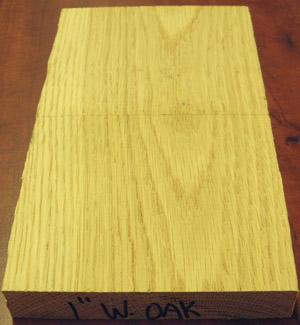Description£º
White Oak lumber comes chiefly from the South, South Atlantic, and Central States, including the southern Appalachian area. Principal species are white (Quercus alba), chestnut (Q. prinus), post (Q. stellata), overcup (Q. lyrata), swamp chestnut (Q. michauxii), bur (Q. macrocarpa), chinkapin (Q. muehlenbergii), swamp white (Q. bicolor), and live (Q. virginiana) oak. The sapwood of the white oaks is nearly white and roughly 2 to 5 cm or more (1 to 2 in. or more) wide. The heartwood is generally grayish brown. Heartwood pores are usually plugged with tyloses, which tend to make the wood impenetrable by liquids. Consequently, most white oaks are suitable for tight cooperage. Many heartwood pores of chestnut oak lack tyloses. The wood of white oak is heavy, averaging somewhat greater in weight than red oak wood. The heartwood has good decay resistance. White oaks are usually cut into lumber, railroad crossties, cooperage, mine timbers, fence posts, veneer, fuelwood, and many other products. High-quality white oak is especially sought for tight cooperage. Live oak is considerably heavier and stronger than the other oaks, and it was formerly used extensively for ship timbers. An important use of white oak is for planking and bent parts of ships and boats; heartwood is often specified because of its decay resistance. White oak is also used for furniture, flooring, pallets, agricultural implements, railroad cars, truck floors, furniture, doors, and millwork.

